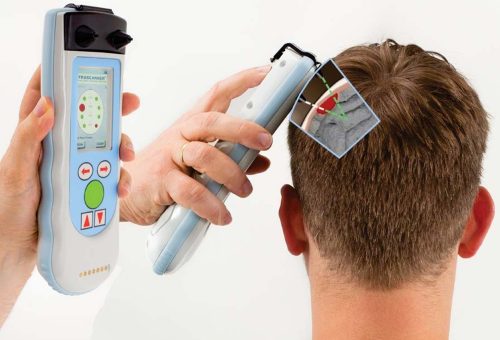The “Infrascanner” at Boxing Events – A Positive Move Forward??
By Professor M.R Graham
Traumatic brain injuries (TBI) can be caused by a blow to the head, or sudden motions of the head, as in semi-contact or full contact sport and can result in death (http://www.bbc.co.uk/news/uk-scotland-tayside-central-37552822).
The pathophysiology of TBI varies considerably depending on the location of the injury, within the brain and its severity (Graham et al., 2015).
Severe injuries may lead to intracranial bleeds, large destruction of the brain tissue, and at worst death (Pearn et al., 2016).
The diagnosis of TBI is mainly based on a neurological examination of the patient and additionally using imaging radiology techniques such as computed axial tomography (CAT) or magnetic resonance imaging (MRI).
The Glasgow Coma Scale (GCS) can be used to assess the severity of TBI on the basis of cognitive behaviour (Teasdale and Jennet, 1974; Teasdale et al., 2014). A total score of 13–15 refers to mild TBI (mTBI), 9–12 to moderate TBI, and 3–8 to severe TBI (Faul and Coronado, 2015).
However, neurological examination by GCS has limitations and MRI and CAT scans are enormous pieces of equipment and not portable. Also, one CAT scan is equivalent to the electromagnetic radiation of 400 chest X-Rays. This concentration can be particularly harmful, to the traumatised brain.
The “Infrascanner” can provide field-based diagnosis and assist in the decision to evacuate an injured athlete to a hospital for immediate investigation and medical or surgical management, if required.
The “Infrascanner” can accurately detect intracranial haematomas using the unique light-absorbing properties of haemoglobin which is located within blood and the non-invasive, non-ionizing nature of Near Infrared (NIR) technology.
Enormous advantages of the “Infrascanner” for speed of diagnosis are:
- Portability (Weight: 400 grams)
- Patient measurement is completed within 2-3 minutes;
- It detects haematomas greater than 3.5 ml in volume;
- It detects haematomas up to 2.5 cm deep from the surface of the brain (or 3.5 cm from the skin)
Such technologically advanced equipment, could become mandatory in all boxing events, within a very short period.
Failure to have the “Infrascanner” and personnel trained in its use may ultimately invalidate sporting licences and insurances and result in enormous medical negligence claims.
Already in boxing, deaths from intracranial haemorrhages may have been prevented, if the “Infrascanner” had been present and be used as a diagnostic tool (www.infrascanner.com).
Controlled Research Studies have already proven 80-100% sensitivity and 90-100% specificity (Leon-Carrion et al., 2010).
REFERENCES
- Faul M, Coronado V. (2015). Epidemiology of traumatic brain injury. Handb Clin Neurol 127:3–13.
- Graham MR, Davies B, Cooper SM, Bhattacharya K, Baker JS. (2015). Should an increase in cerebral neurochemicals following head kicks in full contact karate influence return to play. Int J Immunopathol Pharmacol. 28(4): 539-546.
- Graham MR, Myers T, Evans P, Davies B, Cooper SM, Bhattacharya K, Grace FM, Baker JS. (2011). Direct hits to the head during amateur boxing is associated with a rise in serum biomarkers for brain injury. Int J Immunopathol Pharmacol. 24(1): 119-125.
- Infrascan Handheld Brain Diagnostics. infrascanner.com. Accessed March 7, 2017.
- Leon-Carrion J, Dominguez-Roldan J, Leon-Dominguez U, Murillo-Cabezas F. (2010). The Infrascanner, a handheld device for screening in situ for the presence of brain haematomas. Brain Injury. 24(10):1193-1201.
- Mike Towell death: Calls for fatal accident inquiry. http://www.bbc.co.uk/news/uk-scotland-tayside-central- 37552822. Accessed April 26, 2017.
- Pearn ML, Niesman IR, Egawa J, Sawada A, Almenar-Queralt A, Shah SB, Duckworth JL, Head BP. (2016). Pathophysiology associated with traumatic brain injury: current treatments and potential novel therapeutics. Cell Mol Neurobiol Advance online publication. doi:10.1007/s10571-016-0400-1.
- Teasdale G, Jennet B (1974) Assessment of coma and impaired consciousness. A practical scale. Lancet 304:81–84.
- Teasdale G, Maas A, Lecky F, Manley G, Stocchetti N, Murray G (2014) The Glasgow Coma Scale at 40 years: standing the test of time. Lancet Neurol 13:844–854.


